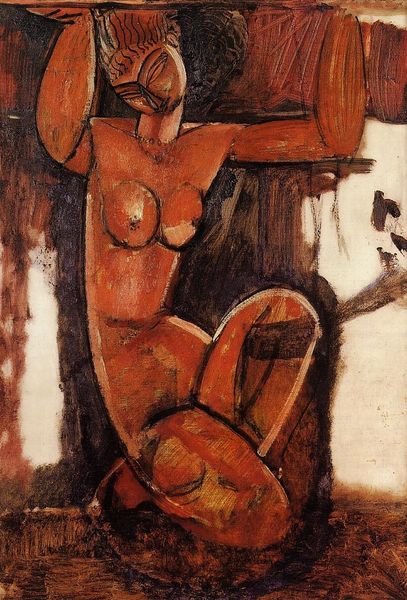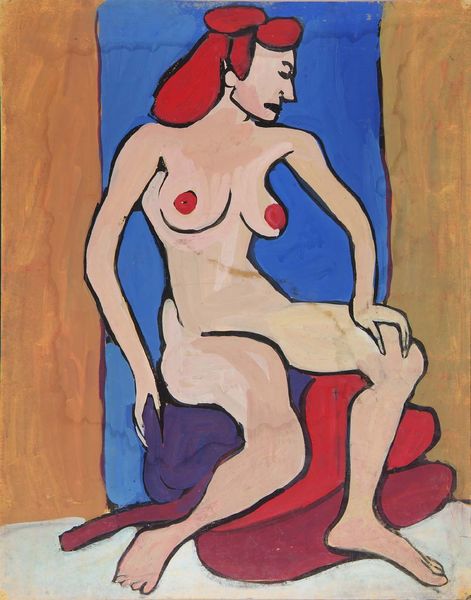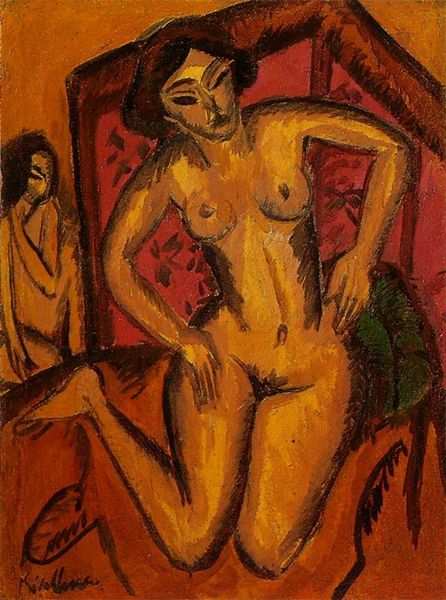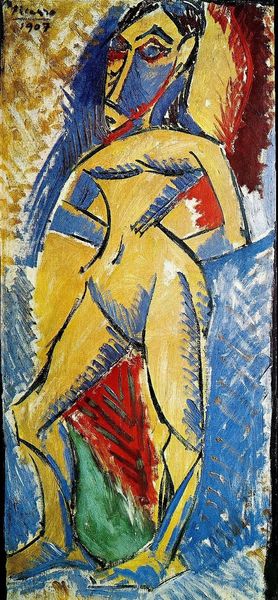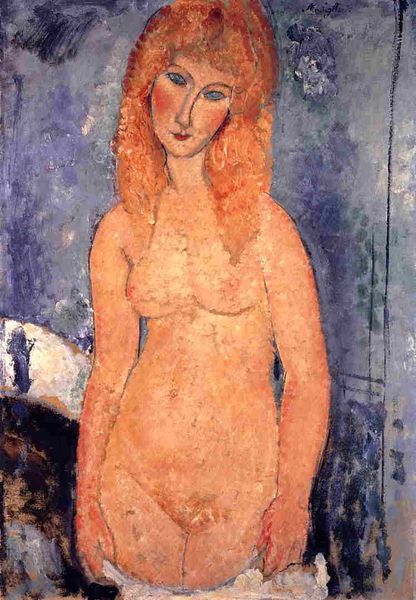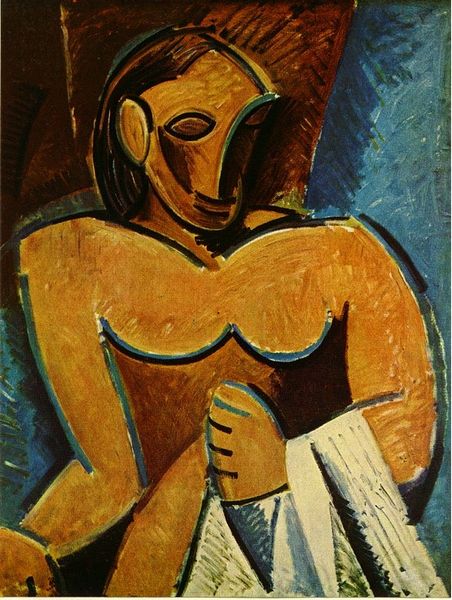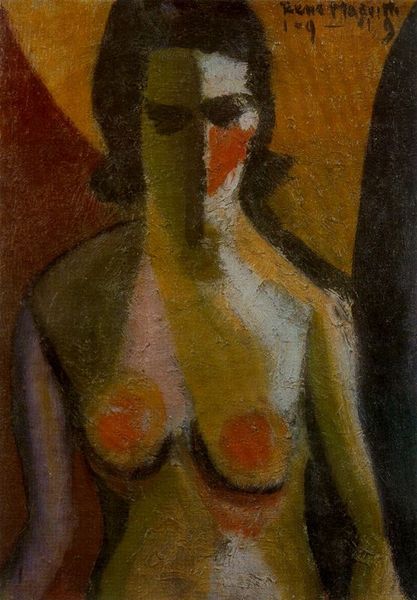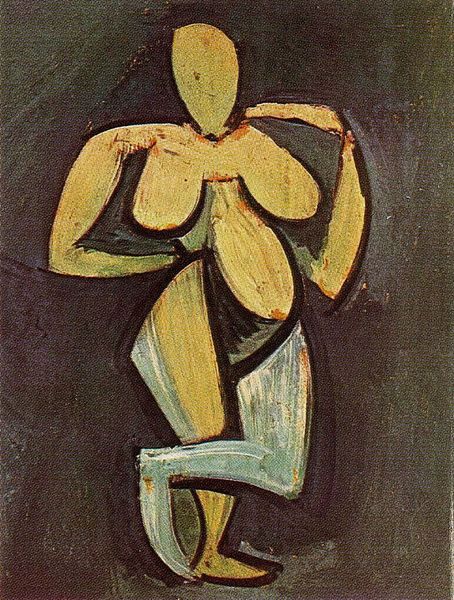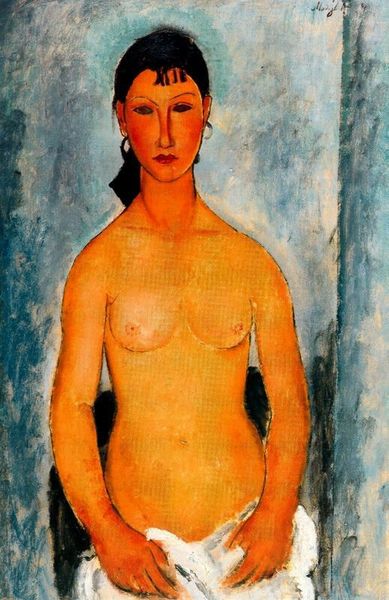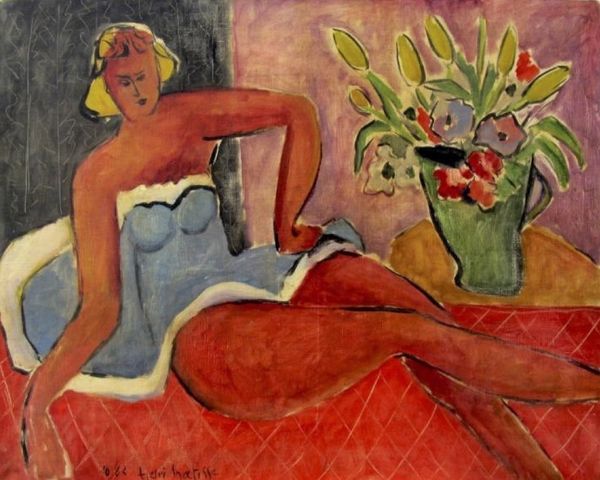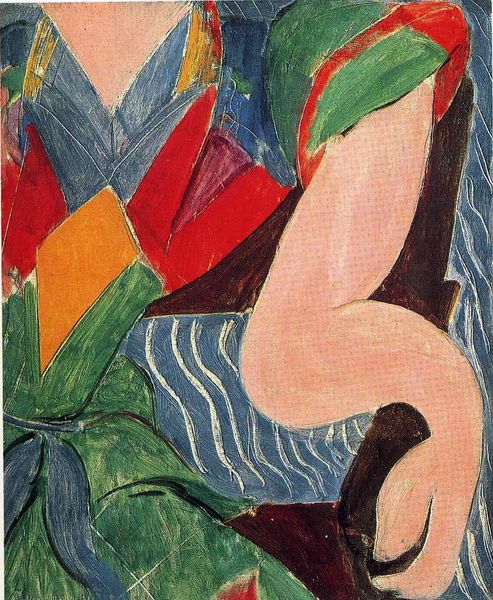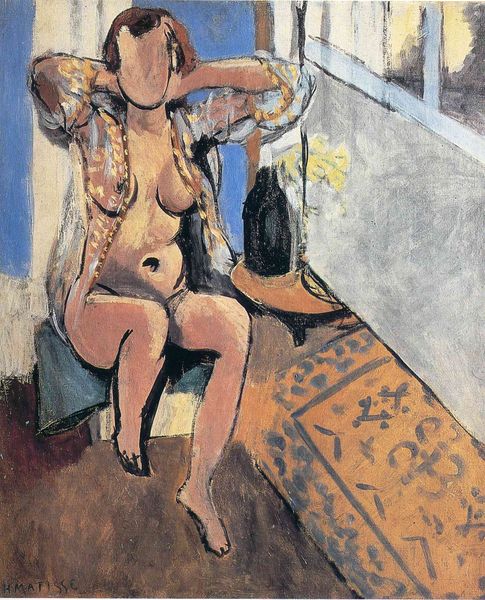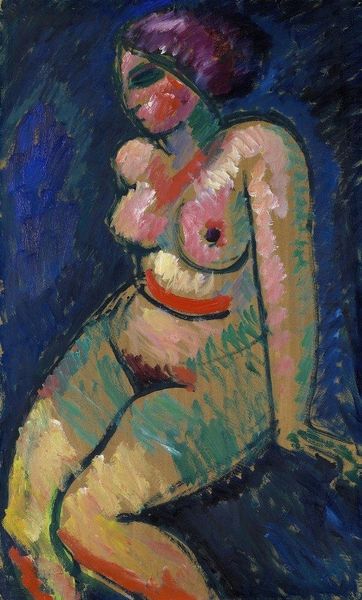
painting, oil-paint, impasto
#
portrait
#
art-nouveau
#
painting
#
oil-paint
#
painted
#
figuration
#
impasto
#
female-nude
#
nude
Dimensions: 81 x 50 cm
Copyright: Public domain
Curator: Amedeo Modigliani's "Standing nude with Garden Background," created in 1913, strikes me with its bold simplicity. What's your immediate reaction? Editor: A feeling of constrained energy, a vibrant rawness. The figure’s terracotta skin vibrates against the lush backdrop, and yet she’s caught, pinned almost, in a pose that seems to ask rather than assert. It’s an uneasy dance between the idealized and the visceral. Curator: That tension feels so central to Modigliani's vision. Notice the mask-like face, recalling archaic or tribal art, while the exaggerated curves embody a sensual grace, a link to Renaissance nudes. It’s a merging of primal and refined forms. This flattening, the emphasis on the line rather than volume, this feels deliberate and powerful. Editor: Yes, and consider that this was a time of profound social change. A painting like this is participating in an ongoing conversation around female agency and the power dynamics of the male gaze, wouldn't you agree? How the body, especially the nude female form, became such contested territory for expression. Curator: I agree; the stylized eyes feel both present and withholding, hinting at hidden narratives, while simultaneously nodding to these enduring art historical themes. Her slightly downcast gaze seems to transcend that relationship – an acknowledgment that women are so much more than an objectified gaze. Editor: And think about the context—Paris in the early 20th century, a hotbed of artistic experimentation. Modigliani was part of a bohemian scene grappling with ideas of sexuality, identity, and liberation. He rejected traditional academic styles in favor of a more expressionistic approach. In that sense, her static and iconic stillness defies notions of feminine sexuality and objectification. It reclaims a more subtle but assertive sensibility that asks the observer to see past easy, patriarchal interpretations of women’s roles. Curator: Looking at it again, what seems timeless to me is this merging of forms, so different from classic Western ideals, almost Byzantine with her gaunt and upright figure. Yet she evokes such presence, so different from much academic art! Editor: It becomes such a poignant reflection, and maybe, in this context, a revolutionary, depiction of women. Thanks for this interesting, and rather urgent, meditation. Curator: My pleasure. This painting will definitely be on my mind as well.
Comments
No comments
Be the first to comment and join the conversation on the ultimate creative platform.
